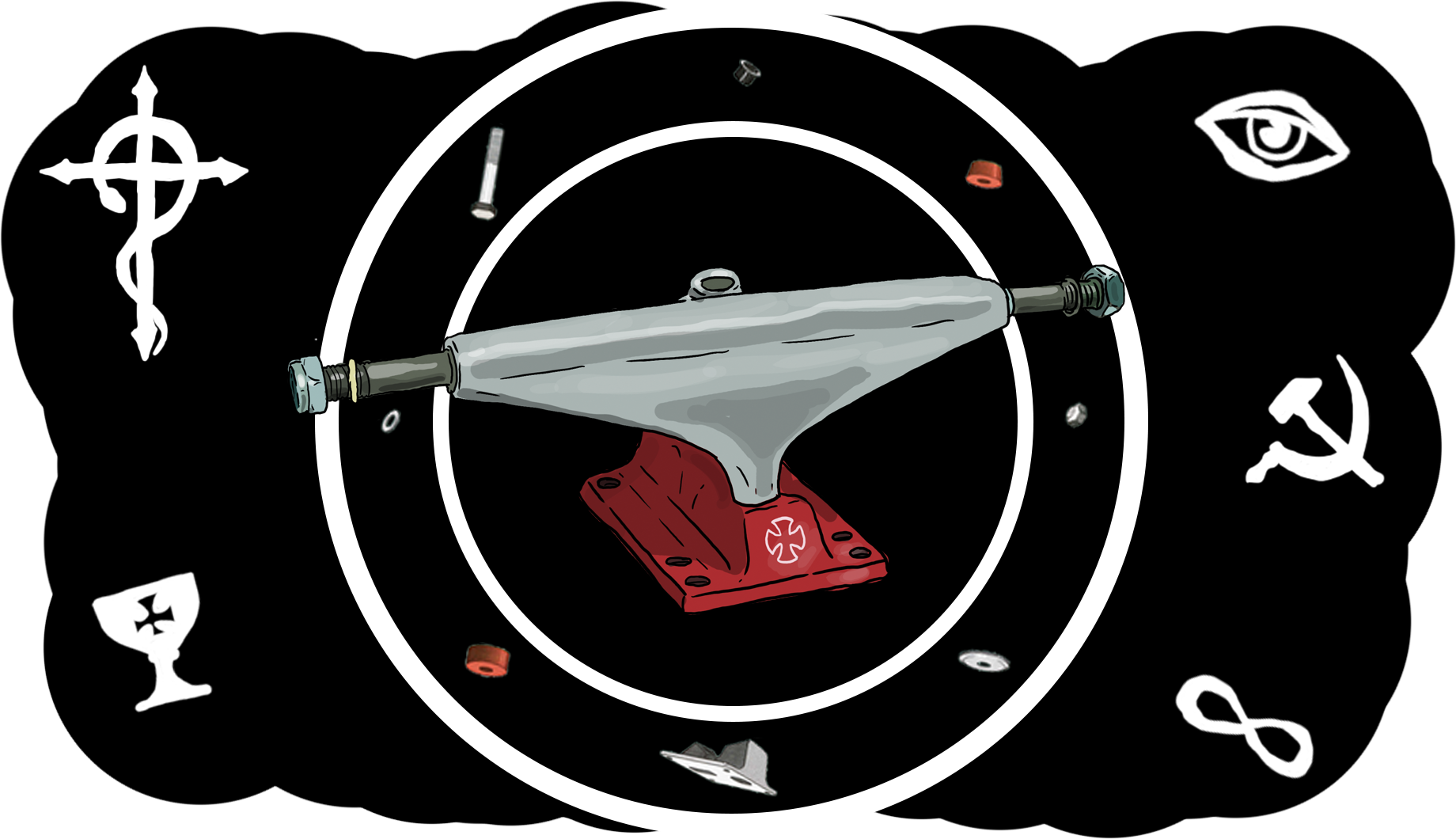
Skateboarding attracts fanatics. Only those willing to slam stay in the game. And within skating’s self-selecting society, many dedicated sub-factions have emerged over the years.
Some worship at the temple of the curb. Others are loyal only to certain brands, which occasionally act as sects unto themselves. But even among those with faithful followings, no company boasts more devoted maniacs than Independent Trucks, which has seen devotees grinding down to the axle and getting the brand’s cross logo tattooed on their bodies for almost 40 years.
Though your average skater is happy to ride Independent’s most current product, some diehards are committed to older, rarer trucks. Yup, among the Indy faithful there’s a smaller, even-more-hardcore cult devoted to riding old-school trucks from the ’80s and ’90s. Their obsession has created a long-running underground market for vintage Independents. Scouring garage sales and eBay, some of them are willing to pay more than $200 for the right kind of ancient aluminum.
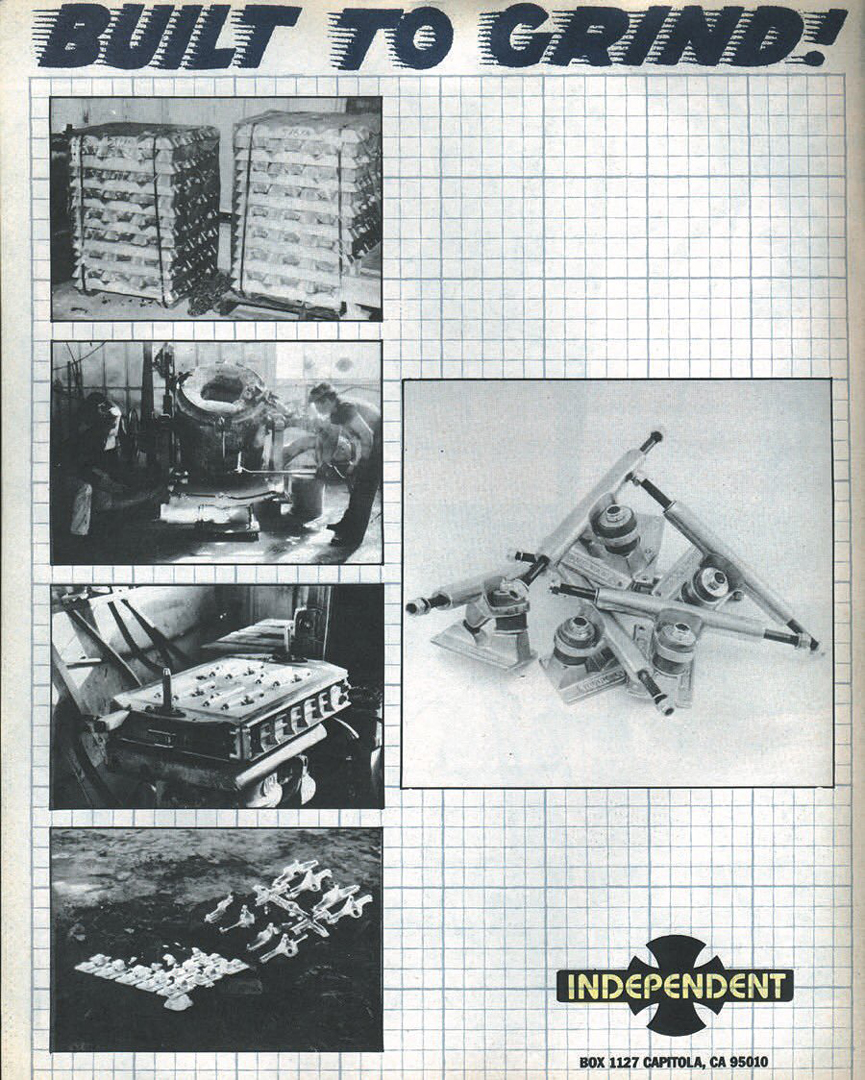
Of course, as any skate nerd knows, the cult’s knowledge isn’t all that mysterious if one digs a little deeper.
Indy assigns each of its new trucks a numbered “stage,” denoted with Roman numerals, probably because that’s simply the most punk way to label something.
The first Indys came out in 1978, designed as a combination of what brand manager Keith Wilson describes as “the two things from the best trucks: the turn of the Bennett and the modern durability and adjustability of the Tracker.” Those first trucks are Independent Stage Is.
Stage II came next in 1979, and so on. Each new stage has featured minor upgrades, shaving off aluminum for weight, “pinching” the baseplate for durability, or adding support “wings” to the hangers, which swoop down distinctively towards the pivot creating lightweight strength.
It’s not just aging bowl riders who obsess over such minutiae either. Your favorite street skaters aren’t immune to vintage Independent madness, we learned. “We have some team riders that swear by certain stages,” Wilson explained. “Geoff Rowley rides Stage VIIs. Gilbert [Crockett] rides Stage VIIIs. So there are some team riders that skate those.”
When asked, Rowley confirmed Wilson’s words. “I’ve ridden Stage VII Indys exclusively since 2005,” he said. But when pushed to reveal why he’s a longtime member of the old-school Indy cult, the Englishman wouldn’t say. Luckily, Swedish artist, Insta skate favorite, and JK Industries rider Ludvig Håkansson was more forthcoming. “The turn is more responsive,” he explained, offering at least some insight into the mind of an old-school Indy rider. Still, that info didn’t exactly settle anything. Maybe the magic is in the technical specs of each stage.
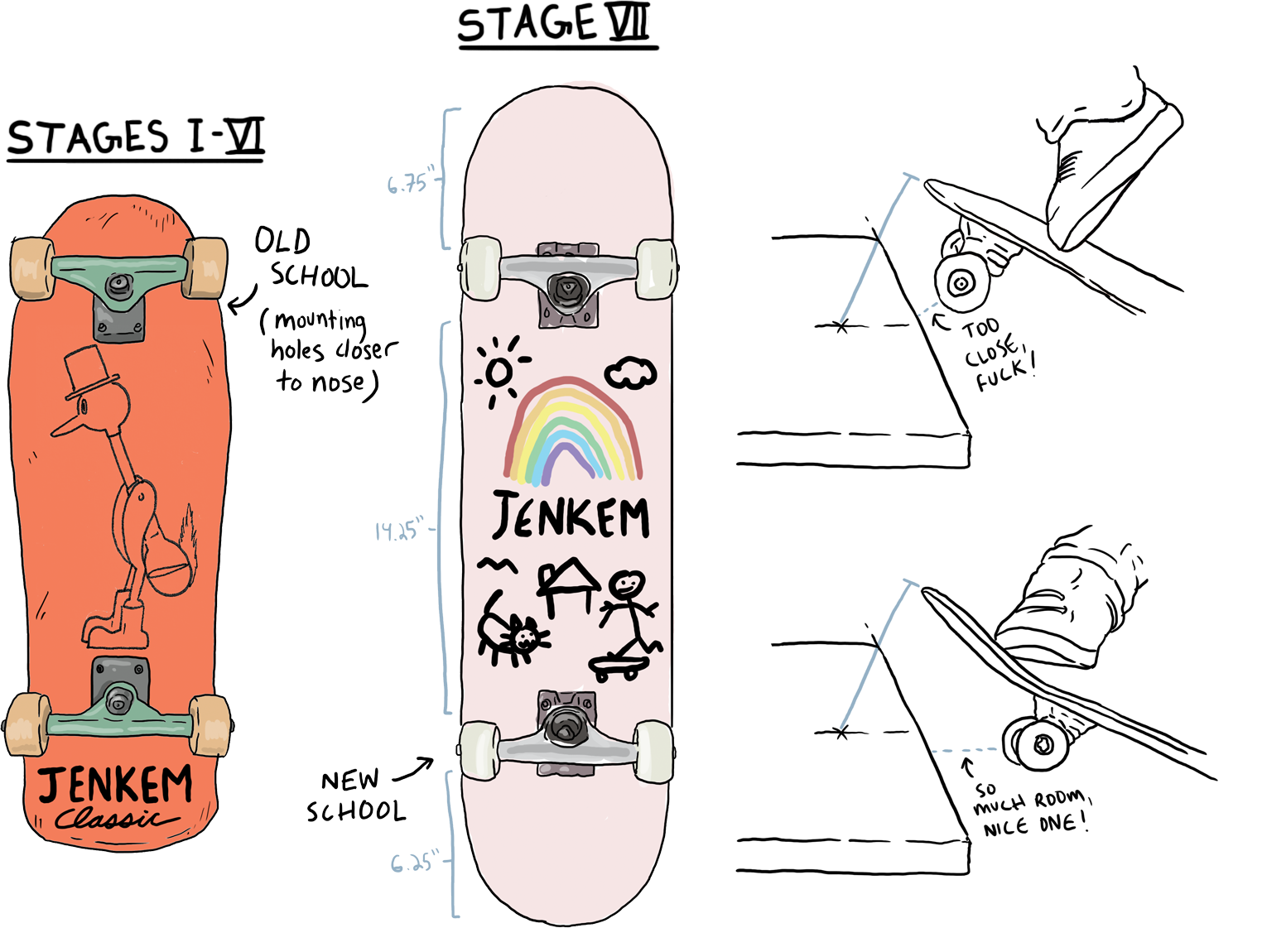
Though Independent has produced 11 different stages now, there have only been a couple of big changes to Independent geometry over the years. According to Wilson, advancements in street skating spurred the first big change in 1993. Before that, the mounting holes on boards were closer to the nose, putting very little baseplate metal between the bolts and, say, a curb.
As nose- and tailslides became standard, skaters would literally shave their bolts off on the rough concrete. Indy’s stage VII trucks offered a solution. With a thicker, sturdier pivot housing and redesigned mounting holes that were set back on the baseplate, closer to the center of the board, Independent Stage VIIs kept bolts safely out of the way of curbs and ledges.
Board companies and other truck-makers soon adopted the new mounting hole pattern, and it remains standard to this day. Despite these two changes, Wilson maintained that “from V to VII… the geometry is essentially the same.”
And Håkansson actually agreed, explaining that he didn’t think the Stage VII upgrades affected Independent’s signature turn much at all. “I’m actually skating Stage VII right now, the first stage with a modern bolt pattern,” he told us. “They are quite similar to [the older] Stage V.”
Clearly, 1993’s Stage VII turn pretty much like previous models, offering scant explanation for why so many riders are obsessed with old school Indy designs. And if this first big geometry upgrade doesn’t explain the cult of old Independent riders, it stands to reason that some other tweak must be responsible.
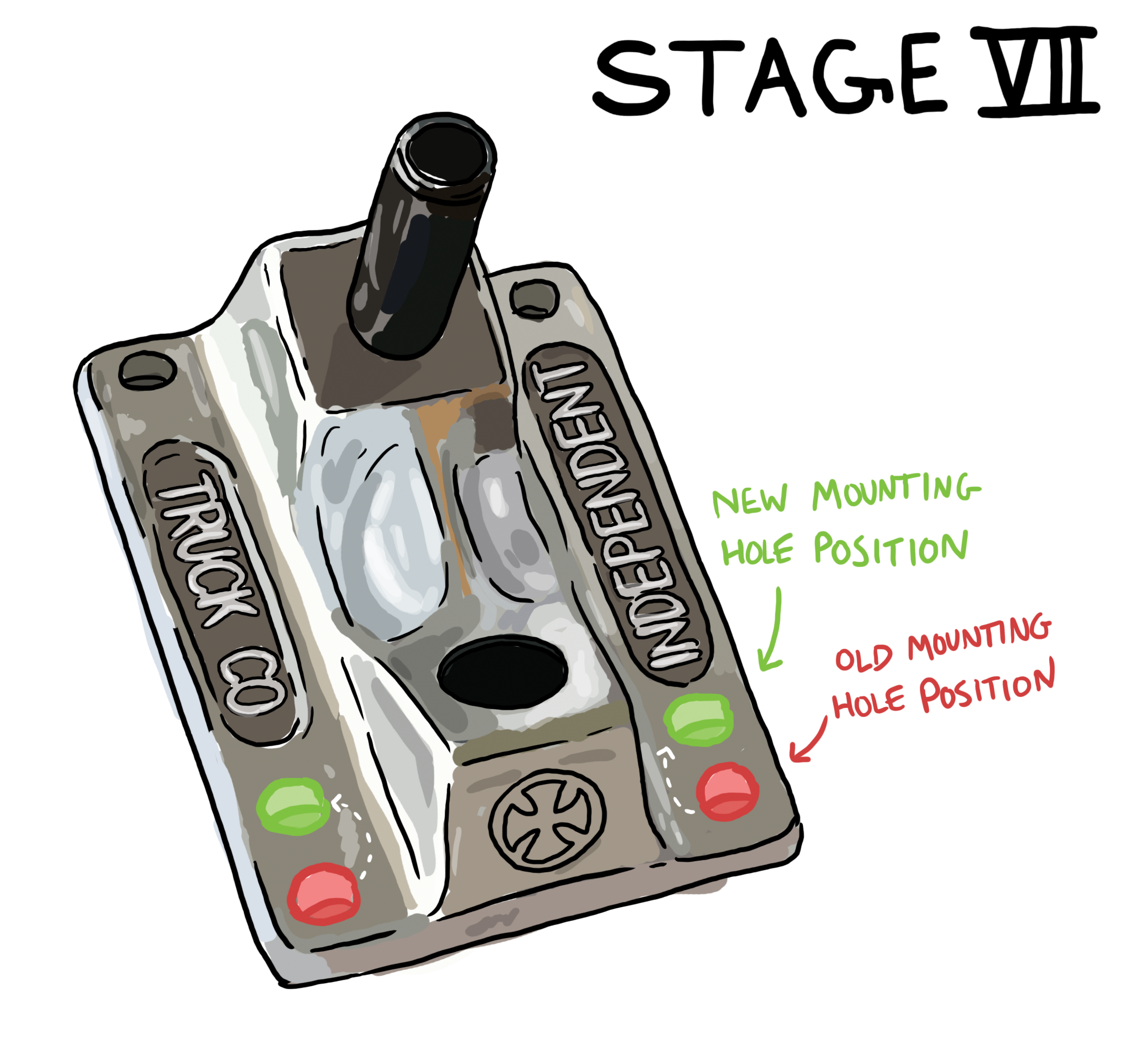
That other tweak is likely the next alteration Indy made to its geometry in 2003, with Stage IX.
According to Wilson, Stage IX, “was the first stage that was computer drafted.” That sounds cool, but working with untested technology had unintended consequences for Independent. “They didn’t tell us that they were really redoing the geometry at all. But my gut feeling is that they just didn’t model it right,” Wilson said. “The truck ended up quite a bit lower.”
The Stage IX modifications dropped standard Indys from 55mm to 53.5mm, totally altering the turn. It didn’t help that the baseplates sucked too. “They fucked up on the baseplate pretty bad and put two holes in it,” Wilson recalled. “Those things broke.” Though Independent returned to a beefed-up baseplate for Stage X, the lower geometry remained and the trucks just didn’t turn like old Indys, making many riders to look to past models to get the perfect turn.
Throughout it all, Independent was aware that a small sect of riders had abandoned its contemporary trucks and were only fucking with older models. “Of course we know about the cult following of those trucks,” Wilson said. “I mean, I love it. If you think about it, old stuff is cool and those trucks have a certain allure to them.”
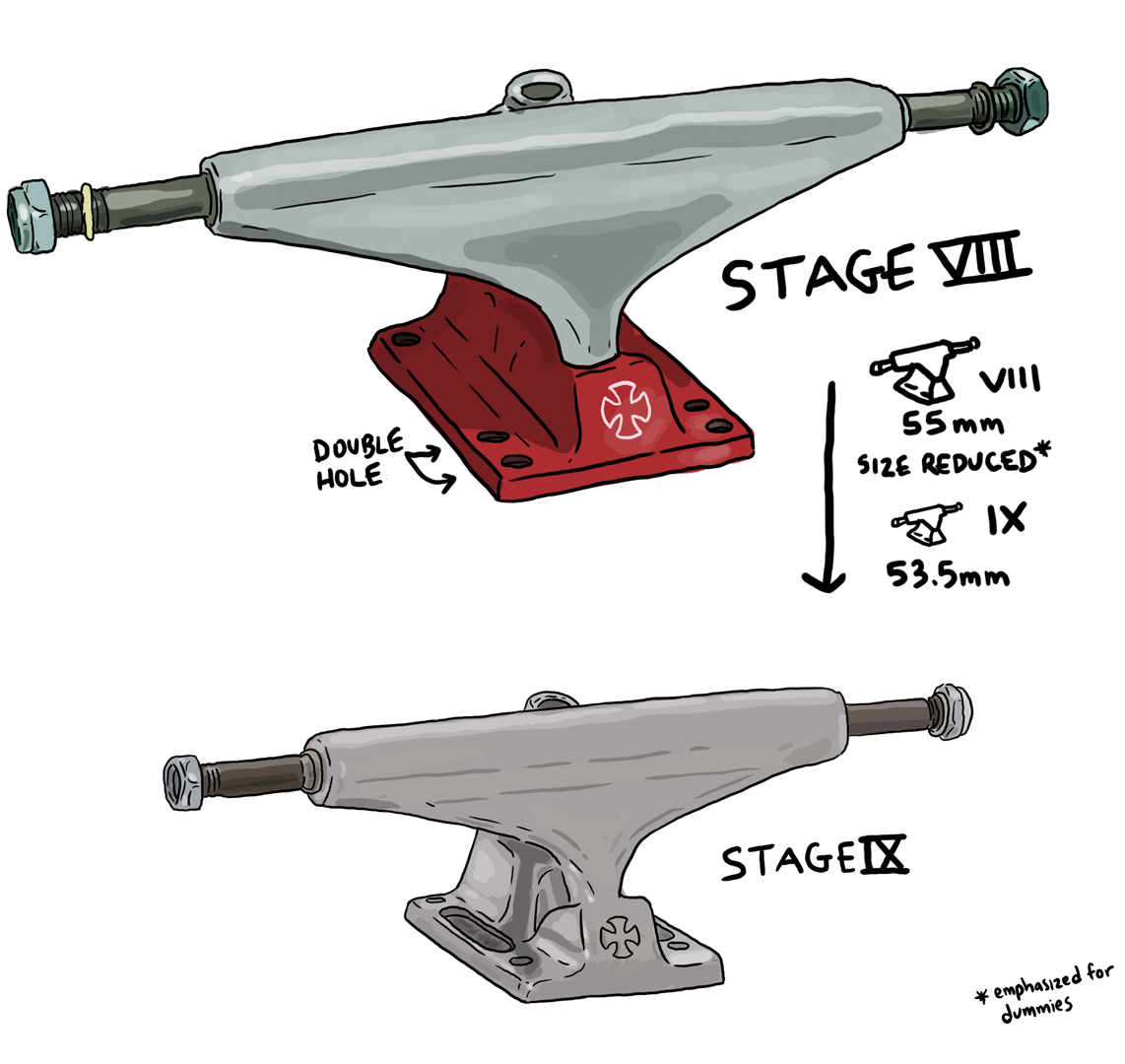
And it’s that awareness that just might explain the changes Independent made to its latest model, the Stage XI, which came out in 2013. No sane brand would ever keep competing with its own back catalog, right? Though Wilson didn’t explicitly say that the cult of old Indy riders impacted recent design tweaks, he did confirm that older models definitely influenced his decisions concerning Stage XI.
“I wanted to get it back as close as possible to the Stage V to VII geometry,” he told us. Accomplishing that required some retro-inspired redesigns, including a return to the classic 55mm height and pivot and kingpin angles inspired by Stage V.
Technical aspects and cultists aside, Wilson said that Stage XI was really about catering to all of Independent’s longtime fans, while honoring the brand’s legacy. “It was after [Independent founders] Fausto and Eric died,” he said. “I felt like this was my opportunity to get it back to where your traditional Indy dude wants it to be.”
“No sane brand would ever keep competing with its own back catalog, right?”
And though Wilson acknowledged that with every new truck, “there’s got to be some sort of evolution there. Skaters want that,” he also noted that Indy still, “mostly sells our standard silver, solid-axle, solid-kingpin, gravity-cast stuff.”
So if Indy’s cult followers can access the best parts of their beloved older designs in newer truck models like the Stage XI’s, might they be less concerned about stockpiles of 20-year-old hunks of metal? Maybe. But the collector’s sickness runs deep. Some will keep stacking old trucks, only now they won’t worry about where to find the right pair of trucks.
Related Posts
Comments
Popular
-
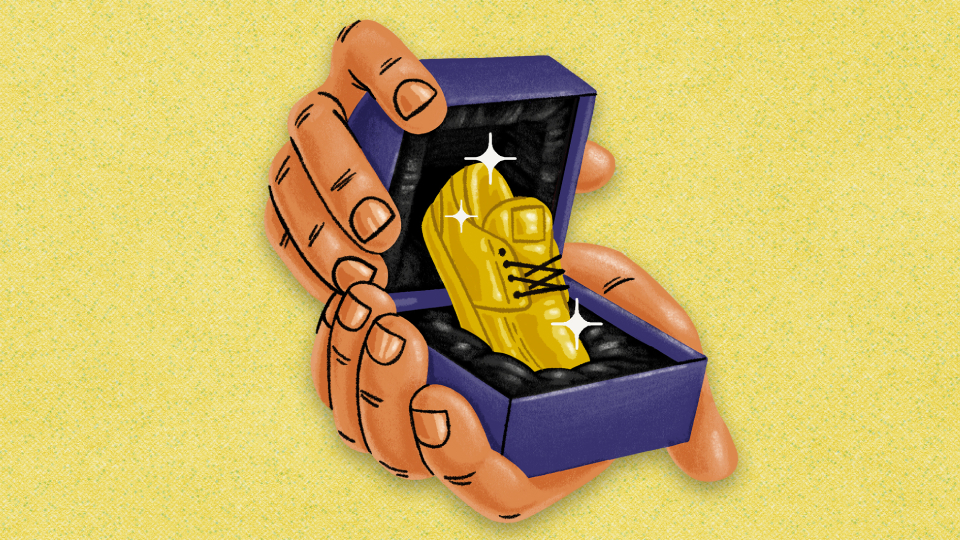 THE RISE AND FALL OF PRO MODEL SKATE SHOES
THE RISE AND FALL OF PRO MODEL SKATE SHOES
While there are still some exceptions, the signature shoe has largely evaporated from the skateboard industry. But, why?
-
 A CHAT WITH LUDVIG HAKANSSON, THE OLDEST SOUL IN SKATEBOARDING
A CHAT WITH LUDVIG HAKANSSON, THE OLDEST SOUL IN SKATEBOARDING
The man loves to read Nietzche, skates in some expensive vintage gear, and paints in his own neoclassical-meets-abstract-expressionist style.
-
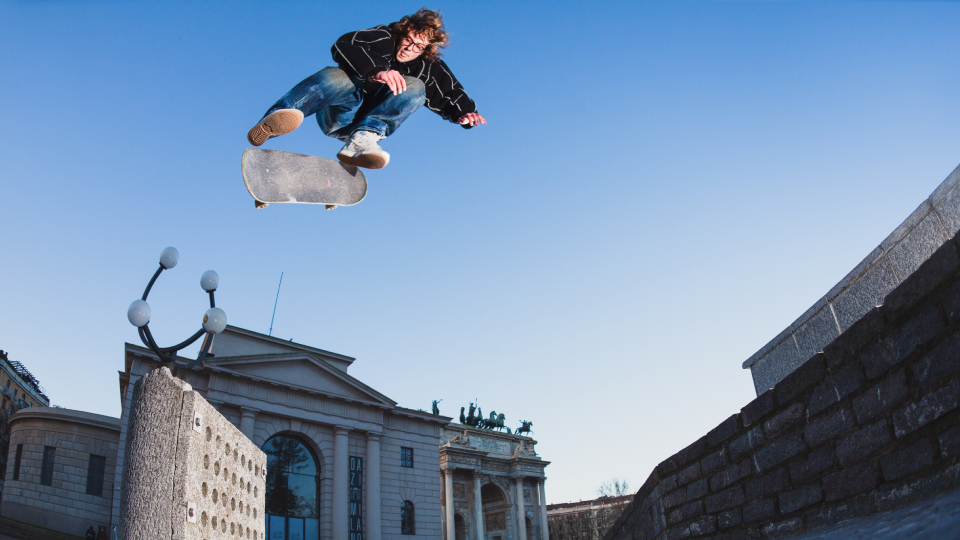 A LOOK THROUGH THE GLASSES OF VINCE PALMER, AKA CHICKEN LITTLE
A LOOK THROUGH THE GLASSES OF VINCE PALMER, AKA CHICKEN LITTLE
Get to know the 18-year-old German repping Baker and Supreme in Milan.
-
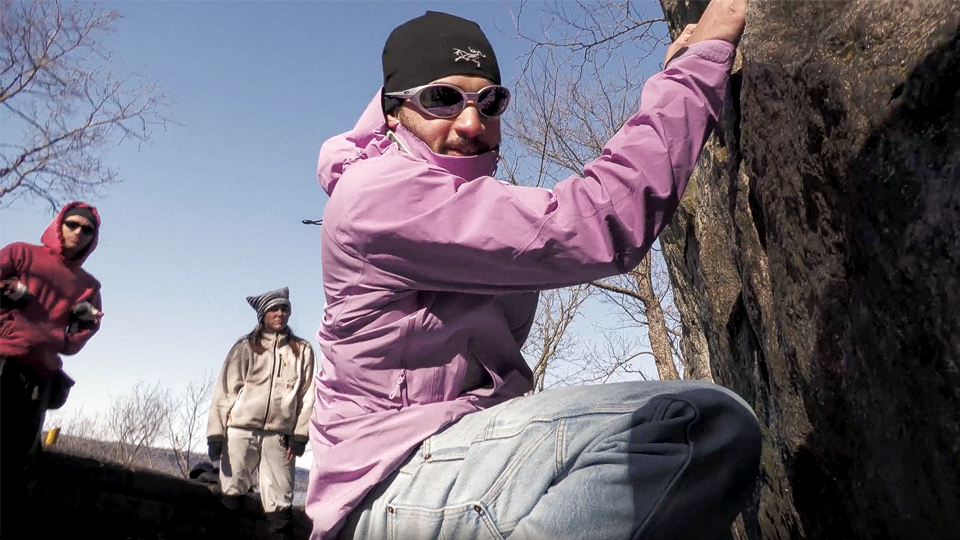 WHO ARE THE SKATERS RESURRECTING ROCK CLIMBING IN UPPER MANHATTAN?
WHO ARE THE SKATERS RESURRECTING ROCK CLIMBING IN UPPER MANHATTAN?
We met up with Joel Popoteur, an employee at Supreme and long-time skater to learn about his outdoor movement.
-
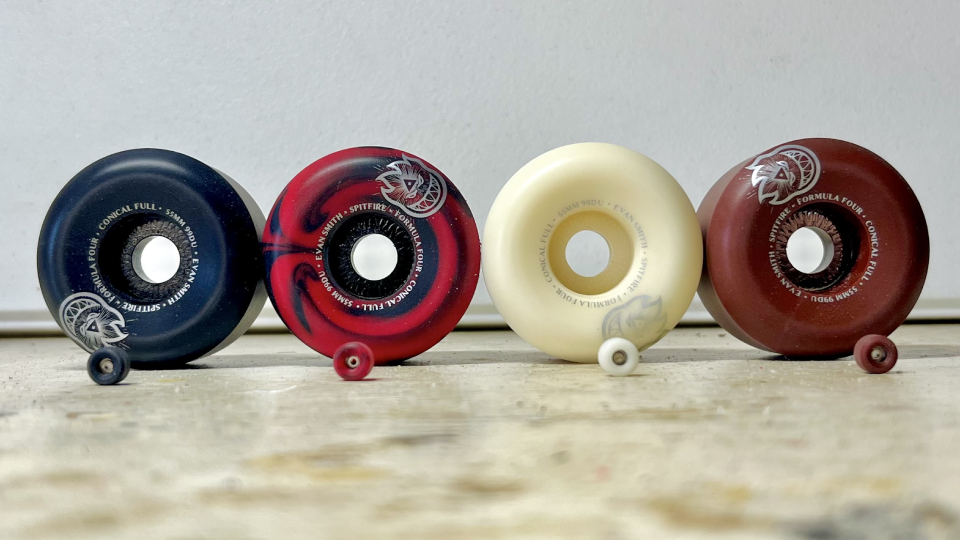 GOT OLD WHEELS? THIS GUY IS MAKING MINI FINGERBOARD REPLICAS WITH THEM
GOT OLD WHEELS? THIS GUY IS MAKING MINI FINGERBOARD REPLICAS WITH THEM
Honey, I Shrunk The Spitfires.

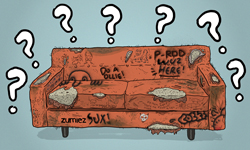
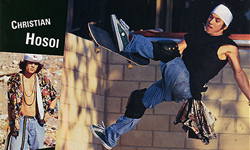
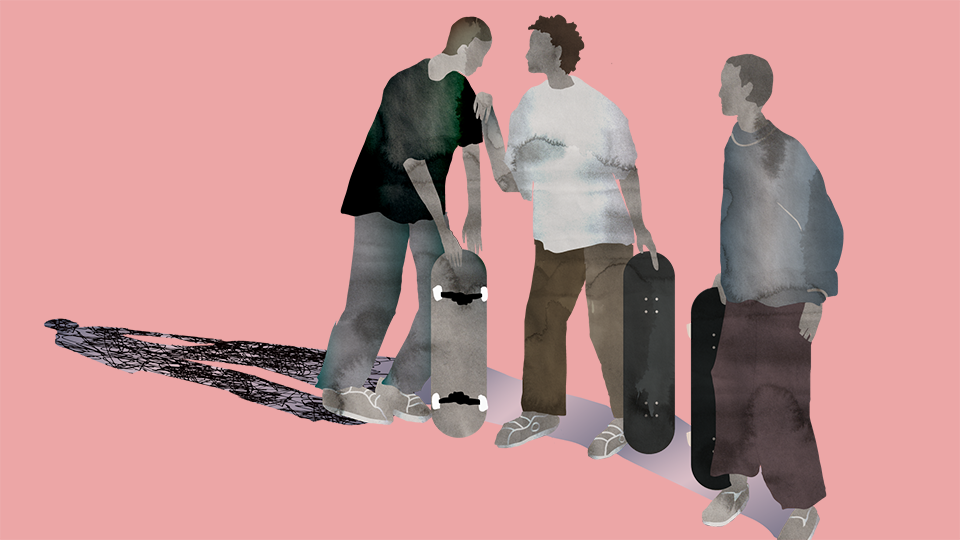

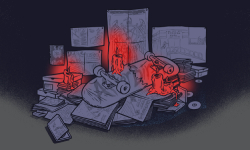
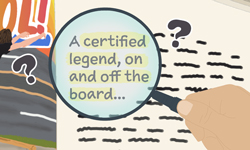

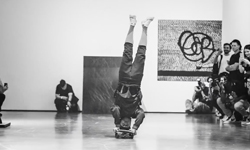
May 8, 2018 1:38 pm
I enjoyed this
March 4, 2022 8:05 am
Tensor and Silver trucks are for hardcore pool skaters!
May 8, 2018 4:02 pm
Well done!
May 8, 2018 7:53 pm
the stage 9s were a success in terms of indy branching out to technical street skating market. Because they were lower and lighter and dropped the 6 hole base plate. Alot of pro’s and skaters that maybe rode venture at the time (probably the biggest truck company of the early 2000’s) started to come back to indy when stage 9 came out. There were a few die hard indy riders that rode them before that, even doing technical street skating on the heavier, vert oriented predecessor, in favor of its turning and stability, but it wasnt until stage 9 that you saw its popularity grow.
I believe the stage 11’s more came as a result of the steep, sharp turning of ace trucks, which gained popularity and promised the turning of older indys from the 80s. As well as some street skaters who took the bottom washers out of the stage 10’s because they didnt turn very much. To me it explains, the bigger, akward bottom washer on the stage 11, begging to be removed. As well as the additional height on the axle that would allow them to sink down to normal height with no washer.
May 8, 2018 8:26 pm
Kre-per trucks though.
May 12, 2018 9:53 pm
Damn! Hell yeah 🦇 haha